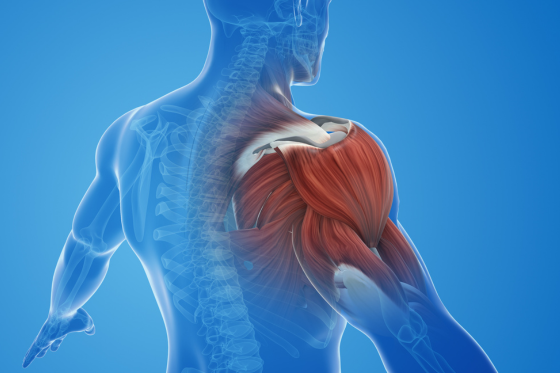If you’ve ever experienced a frozen shoulder, you know it’s like carrying an invisible weight that restricts your movement and independence of your daily life.
It’s not just about the stiffness and pain; it’s about the frustration of not being able to reach for a cup on the top shelf, fasten a seatbelt, or even put on a jacket without wincing.
In this blog, I’ll guide you through the four stages of a frozen shoulder, explain what each stage means for your mobility and pain levels, and suggest steps you can take to manage and treat this condition.
What Is Frozen Shoulder?
Frozen shoulder, or adhesive capsulitis, is a condition characterized by stiffness, pain, and a limited range of motion in the shoulder joint.
It typically develops over time and progresses through distinct stages.
Understanding these stages is crucial for effective management and treatment, allowing you to navigate your recovery journey with more confidence.
By understanding these stages, you’ll be better equipped to take control of your recovery and work towards a pain-free future.
The Impact of Frozen Shoulders
Frozen shoulder doesn’t just affect your shoulder; it impacts your entire life.
The pain and stiffness can disrupt sleep, make daily activities a struggle, and leave you feeling isolated as you cope with the limitations.
It’s a condition that tests your patience and resilience, but there’s hope.
With the right treatment and support, you can reclaim your mobility and enjoy life without constant pain.
Frozen shoulder progresses through four key stages, each with its own set of symptoms and challenges.
The stages represent a natural progression of the condition, from the initial onset of pain to the eventual restoration of movement. Let’s break them down:
The 4 Stages of Frozen Shoulder
Stage 1: Pre-Freezing (Early Onset)
Symptoms: This stage is often marked by mild discomfort and a gradual increase in pain, especially at night or when reaching overhead. You may notice slight stiffness, but it’s not yet debilitating.
Management: At this point, early intervention is key. Gentle stretching and anti-inflammatory medications may help manage symptoms. Seeking a professional evaluation can prevent further deterioration.
Stage 2: Freezing
Symptoms: During the freezing stage, the pain intensifies, and the range of motion starts to decrease significantly. Simple tasks become challenging, and you might experience sharp pain with certain movements.
Management: This is the stage where physical therapy becomes crucial. It helps maintain as much mobility as possible while managing pain. Regular sessions with a therapist can prevent further loss of motion.
Stage 3: Frozen
Symptoms: In the frozen stage, pain may decrease, but stiffness reaches its peak. The shoulder becomes extremely limited in movement, making daily activities very difficult.
Management: This is a time for consistent therapy and gentle exercises to maintain joint mobility. Stretching and strengthening exercises, tailored to your condition, can help keep the shoulder from becoming entirely rigid.
Stage 4: Thawing
Symptoms: In the thawing stage, pain starts to diminish, and the range of motion slowly improves. This is the light at the end of the tunnel, signaling the beginning of recovery.
Management: Focus on gradually increasing activity and stretching to regain full motion. At this stage, a comprehensive rehabilitation program is essential to ensure a full recovery.
Your Next Step: Get Expert Help
If you’re struggling with frozen shoulder pain, you don’t have to face it alone.
Our team at in the Bay Area specializes in treating frozen shoulders, helping you move through the 4 stages with expert guidance and support.
We’re offering a free discovery visit where you can talk to a shoulder pain expert who treats shoulder pain every day.
During this visit, you’ll receive personalized guidance and tips to recover from a frozen shoulder, along with answers to any questions you may have.
Call us at 408-358-1460 to schedule your free discovery visit.
Let’s take the first step toward reclaiming your mobility and living a life free from the pain and limitations of a frozen shoulder.
For more information on natural treatments for shoulder pain, you can download our free advice report where I’ve put together lots of useful information.
If you prefer, you can also book a free telephone consultation with our expert team to discuss how we can help you recover fast and naturally without painkillers, injections, or surgery.
Another option is to come and see us at the clinic for a free discovery visit where we can show you around the place and discuss our treatments to see if we are the right fit for you.
The most important thing is to choose one of these options now before your pain gets worse and stops you from doing all the things you love.
More Free Advice
If you want to stay up to date with the latest advice on natural treatments, you can follow us on social media and read our expert articles.
Follow us on Facebook and Instagram for more free tips and updates from our clinic.
Subscribe to our YouTube channel to see how to do exercises correctly and stay healthy.
Read our expert article to find Easing Into Movement: Exercises for Frozen Shoulder Recovery
Exercise for Shoulder Pain: Your Key to a Pain-Free Year Find out from our expert blog.
Find Physical Therapy for Shoulder Pain: Your Pathway to Recovery in our expert article.




